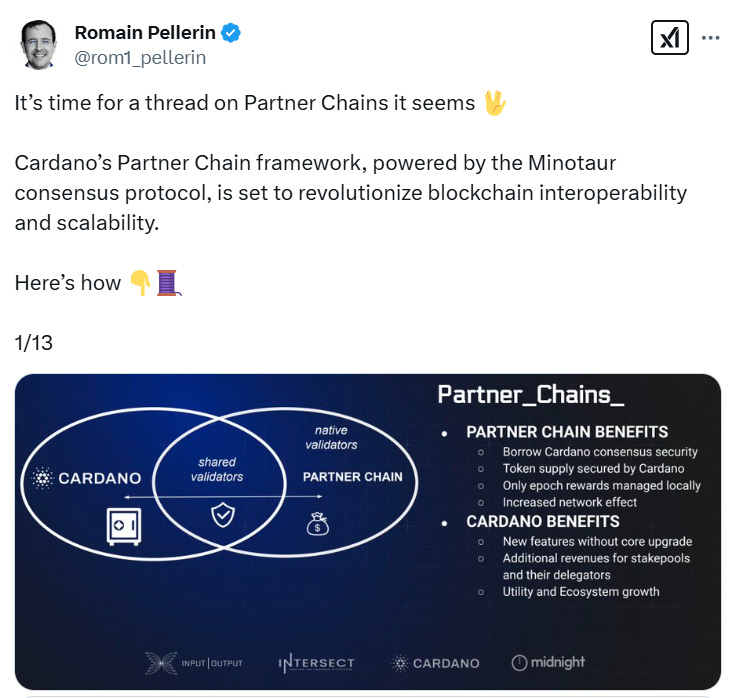Gm and happy Monday frens🖖
We need a faster, more scalable Ethereum. I don't want to pay $20 in fees. That's like 4.5 Pljeskavicas in my country.
That's where Reddio comes in - a parallel ZK-VM Layer 2 powered by GPUs for autonomous AI.
It's designed to significantly improve transaction speed and computational efficiency, while maintaining Ethereum's high security and decentralisation standards.
We're going 0 to 100 right now:
🩰 3 events next week
🏎️ GPU + AI + ETH = SPEEEED
🧵 Chain validators & sybil attacks
📰 News
📅 Meet us next week
We bring the boom to Denver:
🥩 Restaking & DeFAI Day (Feb 25th) - Joined by EigenLayer, EtherFi, Symbiotic, Mode, Hyle, Giza, and Kern.
🧩 Modular & L2 Day (Feb 26th) - right now, the lineup includes Starkware, Linea, Taiko, Giza, =nil;, Veridise, Fluent, Pharos, Redstone, Brevis, Gateway.fm, Hylé, and of course, more to come.
👾 Agents Day – AI x Web3 (Feb 25th) - the event is cohosted by cyber.Fund. We already have Giza, Zircuit, Assisterr, Subsquid, Gud.Tech, CoinFund, Outlier, and Valory/Olas on board.
🛠️ Deep-dive: GPU for scaling Ethereum
Reddio is a ZK-VM Layer 2 that utilizes parallel execution and GPU acceleration to enhance transaction processing and enable AI-driven smart contract execution.
They have 3 main architectural principals:
Unmatched computational scalability – By leveraging GPU acceleration, the chain can process transactions 60x faster than traditional ZK-EVM solutions.
Ethereum-level security – Built on ZK-proof technology, Reddio ensures trustless verification while reducing gas fees and latency.
AI-ready architecture – The blockchain is designed to support AI agents, decentralized inference, and machine learning applications on-chain.
Insights from our recent podcast with Neil Han, Co-founder & CEO of Reddio. Check out the full episode here.
Challenges in Layer 2 scaling
While Ethereum’s Layer 1 remains highly secure and decentralized, its ability to process transactions is limited, which has led to the rise of ZK-EVM solutions.
However, one of the biggest challenges is performance. Traditional ZK-EVM implementations can only process around 100 TPS, which is significantly lower than the demand in the market. In contrast, Optimistic Rollups tend to offer higher throughput, but they introduce a latency period for transaction finality due to fraud-proof mechanisms.
Reddio aims to address this by leveraging parallel execution and GPU acceleration, ensuring that Layer 2 transactions can be executed at a much higher speed while maintaining Ethereum-level security.
Reddio is also similar to SUI and SEI, which focus on parallel execution at the Layer 1 level. While these projects improve performance, they require new ecosystems and infrastructure, which can be resource-intensive and slow to gain adoption. Instead, the blockchain is being built on top of Ethereum, allowing developers to benefit from Ethereum’s established security and liquidity while introducing cutting-edge scalability solutions.
Ethereum and Data Availability Issues
One major technical challenge for Layer 2 solutions is data availability. As Layer 2s generate more transactions, the Ethereum blockchain must store rollup data blobs, which could eventually fill up and become unsustainable.
To mitigate this, various data availability solutions have emerged, including:
Celestia – A modular DA solution that enables scalable rollups.
Avail – Another DA-focused project aiming to optimize blockchain storage.
Neil (Co-founder & CEO of Reddio) believes that while these external solutions provide temporary relief, Ethereum itself will eventually solve the problem, ensuring that Layer 2s can continue to operate efficiently without relying on third-party DA providers.
Decentralized Sequencing and Monetization
The sequencer in a Layer 2 network is responsible for ordering transactions and creating blocks. Today, most Layer 2 sequencers are centralized, meaning a single entity controls transaction ordering and block production.
This centralized approach poses risks:
Governments could shut down a centralized sequencer, disrupting an entire Layer 2 network.
A single entity controlling a sequencer can MEV from users.
Reddio is making a Decentralized Modular Sequencing SDK, allowing multiple independent validators to participate in sequencing, reducing risks of censorship and downtime. Neil draws a comparison to Cosmos SDK, where developers can customize their blockchain stack with flexibility.
From an economic perspective, there is a key debate: centralized Layer 2s profit heavily from gas fees, making it difficult for them to embrace decentralization.
Reddio’s decentralized model shares rewards with miners and validators, creating a more sustainable and permissionless ecosystem.
This decentralized approach is particularly important for institutional adoption, as regulatory uncertainty could impact centralized sequencers in the future.
GPU Acceleration & CUDA in smart contracts
A key technical breakthrough in Reddio is its ability to translate EVM opcodes into CUDA instructions, enabling Solidity smart contracts to run natively on GPUs:
GPUs are inherently better at parallel execution than CPUs.
By using CUDA (NVIDIA’s parallel computing framework), the chain allows smart contracts to execute with significantly higher throughput and lower costs.
Additionally, blockchain's decentralized mining network optimally allocates GPU resources:
Unused GPU capacity can be redirected to AI inference tasks.
This dual-use approach maximizes computational efficiency and lowers operational costs.
Reddio sees this as the future of blockchain computing, where networks are not just limited to transaction execution but also support AI workloads natively.
Learn more about TON Ecosystem with our new podcast!
🧵 What you might missed on Twitter
Get the best alpha from Web3 Twitter, without scrolling aimlessly for hours.
Just click on the tweet to read a full version!
New paradigm for chain validators?
Will other blockchains implement this?
How to solve sybil attacks
We hate them too.
⚡ Blitz News
CARV integrates DeepSeek and CARV ID to power next-gen AI agents in Web3
OKX Web3 wallet is now integrated with the Story Protocol network
Mantle Expands Leadership Team With Key Hires from TradFi, Web3
All right, that’s it for today! 👋 But wait…
You didn’t say “gm” on Twitter! Let’s catch up there for daily insights.
Sending growth your way,
Epic Web3










